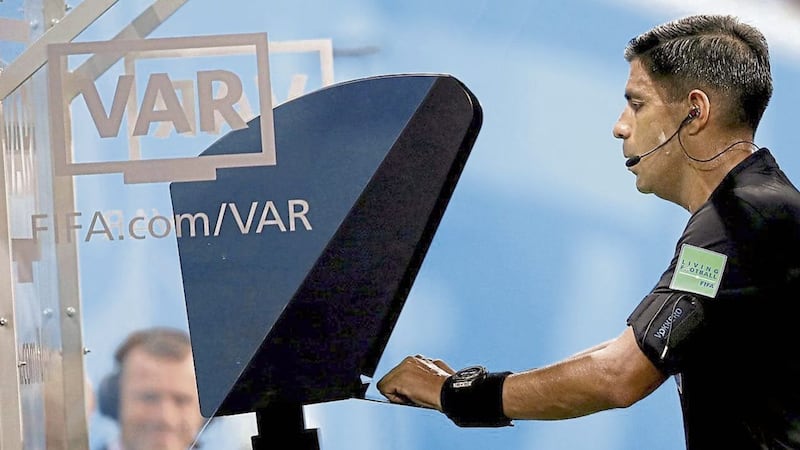HAVE you heard the one about the South African, the Barbadian, the New Zealander, and the Irishman? With an Aussie coach…
Or the old one about how an England team winning the World Cup in a less popular sport is going to turn millions of kids away from soccer? (Turn back to my 2003 columns collection for another version of that rib-tickler).
The Cricket World Cup Final was no laughing matter for the Kiwis who (unlike an admittedly young Ben Stokes) stayed and played for the Black Caps.
Even after reviewing the video footage I still don’t understand how ‘England’ ‘won’ that Cricket World Cup. They only managed to score the same number of runs as New Zealand (who lost fewer wickets). They then tied the subsequent ‘Super Over’. I know, they hit more boundaries, but blah, blah, blah.
Sometimes in sport some things are just ‘meant’ to be. I note, as a matter of fact, not opinion, that it’s the third consecutive cricket World Cup won by the hosts.
However, what truly puzzled me was the DRS, the decision review system.
There were several extremely close LBW calls during the final which were reviewed using technology – and two still somehow ended up with the incorrect decision being applied.
New Zealand’s Ross Taylor was shown to be ‘not out’ but had to walk anyway because the umpire’s (wrong) call had to be upheld, even though the ball clearly would have gone well over the wicket.
Then ‘England and Wales and Ireland and South African and New Zealand and Barbados’ opener Jason Roy was proved to have been LBW on the very first ball of their innings – but again the incorrect umpire’s decision took precedence over the technology, which demonstrated that the ball would have firmly struck a stump inches below the bails.
New Zealand at least were not deprived of their review because of Roy’s reprieve – they used it again later in the final and were wrong themselves, asking for an LBW when the ball was going wide of the stumps. Their opener Henry Nicholls also had a wrong LBW decision rightly reversed by DRS.
Still, I call BS on ‘umpire’s call’, which appears to allow far too big a margin of error in favour of the officials.
The only positive to be said for cricket’s system is that each side is only allowed one incorrect review in the one-day game.
Even though there’s no formal player review system yet in soccer, that sport has been plagued by players drawing the imaginary TV in the air in order to ask for VAR
The Women’s World Cup and the Champions League were pock-marked with such irritating incidents, with matches already marred by on-pitch officials not having the courage of their own convictions and therefore turning to VAR almost every time a player bumps into an opponent in the penalty area.
Clearly something needs to be done to curb such boring behaviour or else the flow of games will be broken up even more.
It’s bad enough waiting for VAR reviews while watching on TV; it must be excruciatingly annoying at the actual game.
As I suggested some time ago when VAR was more loudly mooted for an introduction into soccer, it was never going to end the arguments over matters of opinion rather than matters of fact.
Goal-line technology has been a success - although many Liverpool fans might not agree after its part in Manchester City’s title triumph. The evidence is there to show whether or not ‘all of the ball crossed all of the line.’ The correct calls are being made in such situations – and quickly too.
Yet with VAR many decisions are extremely subjective and remain highly debatable even after repeated viewings from various angles.
Some of the penalties awarded during the Women’s World Cup were ludicrous because the amount of contact was almost minimal.
That’s not being sexist or suggesting that the female players are softer; officials simply need to realise that soccer is still a contact sport and there will be some collisions on and off the ball which are not necessarily fouls.
There was also a ridiculous spot-kick given against Japan when a ball was belted from about three yards away against a defender’s arm which was in an entirely natural position by her side. Sigh.
Soccer should probably follow tennis’s lead, in the former’s case allowing three unsuccessful challenges against refereeing decisions per game (as opposed to per set).
Obviously there may be more challenges than that during most matches because referees and their assistants do make mistakes, do get things wrong, given how fast-moving the modern game is, and how devious many players are.
Yet at least capping reviews to three would reduce the spurious appealing against every blooming throw-in, corner, tackle, and incursion into the opposition penalty area.
Clearly all such challenges to the referee’s authority should go through the team captain. Any other player whining to the ref would automatically be booked. That, as they say, would put manners on them.
Captains would have to consider whether or not a particular team-mate had actually been fouled before he fell to the ground and launched into a triple Salchow with half-twist.
The game might even flow more freely, if officials let play go on when they were unsure about offside; the video evidence could be assessed after a goal had been scored - if the defending side truly believed they had been wronged.
Teams might actually begin to obey the old adage and ‘play to the whistle’, rather than standing with their arms raised and bellowing at the referee and linesmen/ assistant referees.
As far as I’m concerned, VAR has limited appeal, so it there should be limited appeals.
What is happening now, well, it’s just not cricket…









